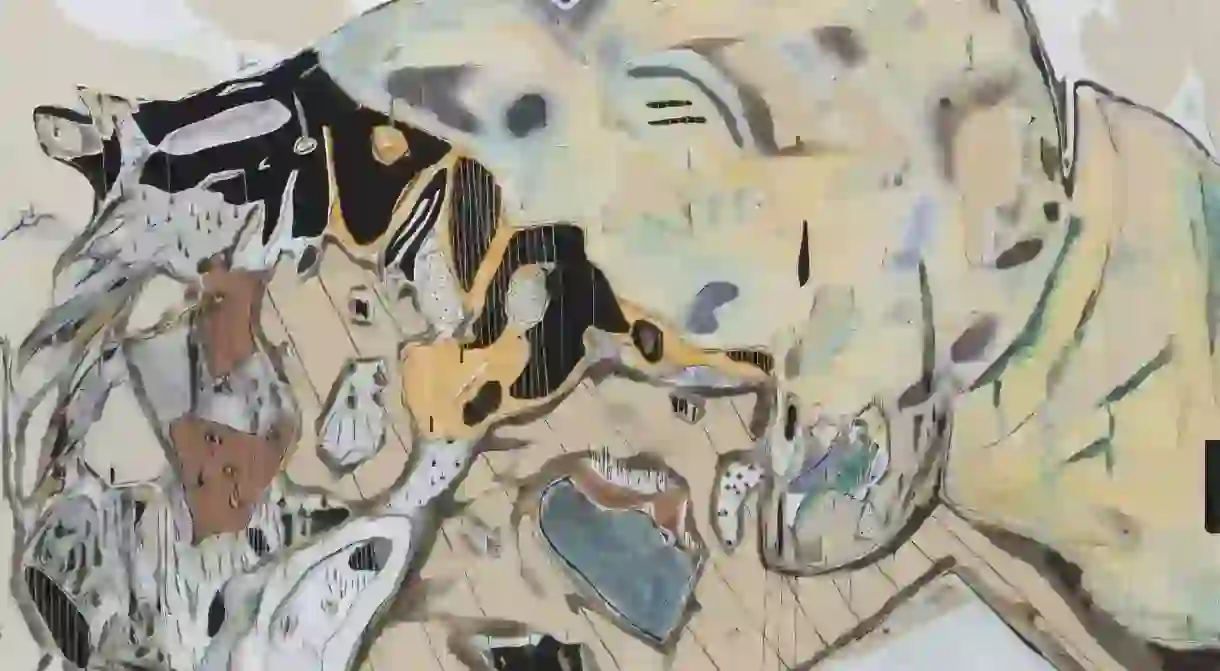Freedom Through Art: An Interview With Rising Art Star Manuel Mathieu

London-based Manuel Mathieu may only be fresh out of Goldsmiths MFA programme, but he is already making a name for himself in the London art world. On top of an already impressive roster of exhibitions (including a solo show at the Institute of Contemporary Art, after winning the fig-2 open call), the Haitian-born artist was recently among five emerging contemporary artists commissioned to produce a new public work as part of the Deptford X Festival, London’s longest-running contemporary visual arts festival.
Can you tell us what brought you to art?
My father’s cousin introduced me to the art world. He is also an artist, and he introduced me to Western artists and ideas that were outside of what was considered ‘art’ in Haiti — for example, installations and performances. It took me time to realise that voodoo, temples, and the Haitian pantheon had installations and performative properties. That led me to create my first installation in my room. After that, it was art or nothing.
Who would you cite as your artistic influences?
I am intrigued by the work of Sol Lewitt; his relationship to hasard (chance) really influenced my understanding of painting and the apparition of images. The idea of hasard for me comes from the idea that, as a painter, I am dealing with the limits of the medium, the limits of its materiality. In addition to those limits, there are the limits of what I can’t perceive and/or create. Most of the time I fail, so I rely on this incapacity and the limits of the materiality of the medium to discover what I don’t know. I am sure that the only way to find the answer is to show up to the studio, so between my failures and the limits of the medium, I am left with a big room for hasard and experimentation.

I am also very familiar with the work of Teresa Margolles. For me, her art explores the poetry of the body, and the way it is displayed and transformed. This is something that is also present in my work.
In the past, I have also worked with certain ideas of liquidity, inspired by the Polish sociologist Zygmunt Bauman. I really liked his book Liquid Love. It has an interesting way of talking about human interaction and sexual behaviours, in which the body becomes something we consume, its boundaries drawn when we define its limits with the Other. It made me question what the body becomes once the lines are blurred.

I don’t know what will come next in my work but I don’t see my artistic concerns as driven by my ‘identity’. I like to approach a series of paintings with a certain context. As an artist, I am constantly facing the gap between my ideas and the material world. The way I decide to fill that gap becomes my language.
Your work has been described as ‘invoking your native country’s political history as a springboard’ for your art — would you agree with this? How far does your Haitian origin come through in your work, and how much would you say your work is representative of Haitian art?
First we should start by defining Haitian art, but trying to define it is very complex, if not impossible. It is a very rich, multi-layered culture and approach on life. I don’t think I have this answer. In the particular context of an exhibition of mine called One Future, yes — in this, I explored Jean-Claude Duvalier’s dictatorship in Haiti, which was collateral damage of the Cold War at the time.

Are you trying to explicitly express or communicate specific messages or meanings in your art?
I rotate around concepts like identity, memory, and the irony that comes with our existence. I turn myself to history and the power structures that are trying to define me. Being black, being from the Caribbean, being a man — these are labels that come with certain connotations. They can create value or take it away, and they can change, depending on where you stand. Making work about the world around me is a way to get closer to understanding it. I experience knowledge through art — and knowledge, I have found, is the closest experience I can have to freedom. A good day in the studio can give me freedom.

You seem to work in quite a variety of mediums and produce some very dissimilar works. Can you describe what your artistic process is, and what leads you towards each piece?
I do work with different mediums, but for the last year I have been focusing on my painting practice. I am trying to make sense of my subjectivity and for that I have different ways of approaching the elaboration of images.
For example, I deal with found images like structures; I destroy them, and through different techniques like scratching and frottage try to make them reappear again. In one piece (Anonymous Birthday Girl), I started with an image from a painter I like (Alex Colville), but I also used several images to create one whole image — a practice that got me exploring anonymity in the way images are produced today.

I often alter the relationship between the subject and its environment, in a playful way like a thaumatrope, moving really fast into each other to give the illusion of one space-time. I am interested in this Bergsonian state of ‘forever becoming’. My subjects are in a perpetual state of becoming, fighting not to become their environment or being swallowed by its abyss.
You can find out more about Mathieu and his work here.













